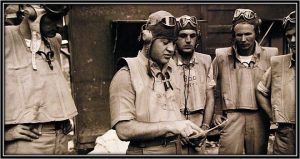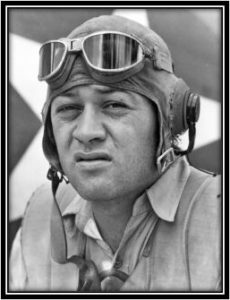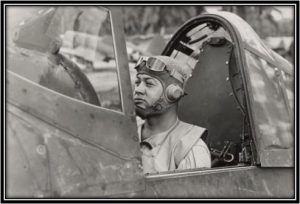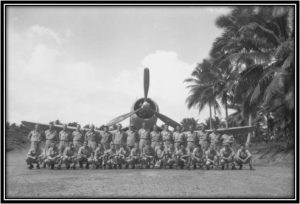This day in aviation (and TV) history: Baa Baa Black Sheep
Contributor: Barry Fetzer
Sources: Soldier of Fortune Magazine, Wikipedia, United States Marine Corps
Forty-nine years ago today, on September 21, 1976, the TV series Baa Baa Black Sheep premiered in the United States. It didn’t last long (two seasons) but it highlighted the exploits of a legendary Marine aviator, Gregory “Pappy” Boyington, to a generation of post-WWII Americans who didn’t know his name or of his flying fame.
Last year Soldier of Fortune Magazine published an article about Colonel Boyington, downloaded today from: https://sofmag.com/pappy-boyington-pilot/. Photos courtesy United States Marines.
 The Flying Legend, ‘Black Sheep’ Col. Pappy Boyington
The Flying Legend, ‘Black Sheep’ Col. Pappy Boyington
Soldier of Fortune Magazine December 4, 2024
by Katie Lange
Editor’s note: SOF publisher Susan Katz Keating knew Col. Pappy Boyington in the 1980’s when he frequented the Nut Tree airport in Vacaville, California. Here is a story of his life in uniform.
“Colonel Gregory ‘Pappy’ Boyington was one of the service’s greatest and most legendary pilots. His exploits as a World War II aviator became so famous that they were made into a TV show. But behind the scenes, his leadership vastly helped the Allies in the Pacific, and it was that persistence that earned him the Medal of Honor.

Marine Corps Maj. Gregory “Pappy” Boyington

Marine Corps Maj. Gregory Boyington, executive officer of Marine Fighting Squadron 121, sits in an aircraft somewhere in the South Pacific, May 1, 1943.
“Boyington was appointed as a Marine aviation cadet, officially earning his pilot’s wings on March 11, 1937. He served in Quantico, Virginia, before commissioning into the regular Marine Corps in July 1937.
“Four years later, he resigned that commission to accept a position with the Central Aircraft Manufacturing Company, a civilian organization. CAMCO became the American Volunteer Group — better known as the Flying Tigers — a unit of American military aviators sent to aid China in its fight against Japan, which was trying to expand its empire across the Pacific.
“The Flying Tigers deployed to Burma in the summer of 1941. By the time the U.S. had joined World War II after the Pearl Harbor attacks, Boyington was serving as a squadron commander and had been unofficially credited with shooting down several Japanese aircraft over China.
“Boyington returned to the U.S. in July 1942 when the Flying Tigers disbanded. He was commissioned back into the military in September 1942, this time as an active-duty first lieutenant in the Marine Corps Reserve. He was promoted to major a month later.
“Boyington was sent back to the Pacific and served as the executive officer of Marine Fighting Squadron 121 during the spring of 1943, after the Guadalcanal campaign had finished. It’s when he earned his nickname ‘Pappy,’ because at 31, he was nearly a decade older than most of the men serving under him.
“In the fall of 1943, Boyington took over command of the newly formed Marine Fighting Squadron 214. Dubbed the ‘Black Sheep Squadron,’ the unit flew F-4U Corsair fighters during their campaign to seize bases in the Central Solomon Islands. Their main goal: to isolate an enemy stronghold at Rabaul, New Britain.

Marine Fighting Squadron 214, on Turtle Bay fighter strip, Espiritu Santo, New Hebrides, with an F-4U Corsair in the background, sometime in 1943.
“Between Sept. 12, 1943, and Jan. 3, 1944, Boyington led his pilots on several daring flights over heavily defended enemy territory that crippled Japanese shipping, shore installations and aerial forces.
“On Oct. 17, the major led a formation of 24 fighters over Kahili Airfield on the island of Bougainville. They circled the airfield, challenging the Japanese to send up any of the 60 aircraft that were grounded there. In the ensuing action, 20 Japanese aircraft were shot down, while not a single Marine aircraft was lost.
“During his three months in charge of VMF 214, Boyington destroyed more than two dozen Japanese aircraft. His leadership helped develop combat readiness within his command, which was credited with being a distinctive factor in the Allies’ aerial achievements over that area of the Pacific.
“Unfortunately, Boyington was shot down over Rabaul on Jan. 3, 1944. He was picked up by a Japanese submarine and spent 20 months as a prisoner of war – something American officials weren’t made aware of until the war ended. Boyington, who was promoted to lieutenant colonel during captivity, was released from a POW camp in Tokyo on Aug. 29, 1945.
When Boyington returned to the U.S., his last two ‘kills’ on the day he disappeared over Rabaul were quickly confirmed. That brought the total number of Japanese aircraft he’d shot down to 28 — the highest tally for any Marine ace during the war, according to the Marine Corps University.
“On Oct. 5, 1945, Boyington joined several other Marines at a ceremony at the White House to receive the Medal of Honor from President Harry S. Truman. The high honor was bestowed upon him posthumously by President Franklin D. Roosevelt in March 1944 — but now that he was alive, he was able to receive it in person.
“After going on a Victory Bond Tour, Boyington continued his Marine Corps career, first back at Quantico, then at Marine Corps Air Depot in San Diego. He retired on Aug. 1, 1947, and was advanced to his final rank of colonel.
“On Jan. 11, 1988, a 75-year-old Boyington died of cancer at a hospice in Fresno, California. He was interred in Arlington National Cemetery with full military honors.
“Boyington’s aviation exploits were the stuff of legend. In the last few decades of his life, he wrote an autobiography titled ‘Baa Baa Black Sheep.’ It became a national best-seller and was turned into a TV show in the 1970s called ‘Black Sheep Squadron.’
“In 1994, the Marine commander was enshrined in the Naval Aviation Hall of Honor at the National Museum of Naval Aviation. The airport in Coeur D’Alene, Idaho, Boyington’s hometown, was renamed the Pappy Boyington Field in 2007.
“Boyington’s wife donated his Medal of Honor to the Marines Memorial Association’s Marines Memorial Club in San Francisco, where it remains on display in the club’s restaurant.”
Many of us who were young and impressionable in the mid 1960’s (including me) remember the star of Baa Baa Black sheep as dashing and handsome Robert Conrad. When Wild Wild West premiered in 1965, I was 12 years old and I wanted to be just like Conrad playing James West. I dreamt of being a secret agent saving America from villains and working with the advanced and wonderful inventions put together by his sidekick, Ross Martin, playing inventor and master of disguise Artemus Gorden. Wild Wild West was cancelled in 1969.
According to Wikipedia, “Conrad briefly returned to series TV from 1976 to 1978 as legendary tough-guy World War II USMC fighter ace Pappy Boyington in Baa Baa Black Sheep, retitled for its second season and in later syndication as Black Sheep Squadron in a re-tooling that failed to keep the series on the air. He directed three episodes.
“Despite the show’s struggles in the ratings, Conrad went on to win a People’s Choice Award for Favorite Male Actor and a Golden Globe nomination for his performance as ‘Pappy’”.
While I fantasized as a 12-year-old of being a secret agent saving America like Conrad portrayed in Wild Wild West, reality ultimately set in. Neither dashing nor nearly as handsome as Conrad, I had to “settle” for becoming a Marine and barely getting through Navy flight training, being assigned to both “stupid studies” and “stupid swimming” at the same time in Pensacola, having failed several of the inventory examinations, including treading water.
But by the grace of God, I made it, somehow, and then only by the skin of my teeth. And between the real studies and extra “stupid studies” I was saddled with at flight school, in the very few minutes of leisure-time I had, I prioritized and enjoyed watching the two years of Baa Baa Black Sheep on TV and dreamt of my to-be exploits as a Marine aviator. As it turned out, I actually didn’t “settle”. I chose wisely.
Onward and upward!
Sources: Soldier of Fortune Magazine, Wikipedia, United States Marine Corps







